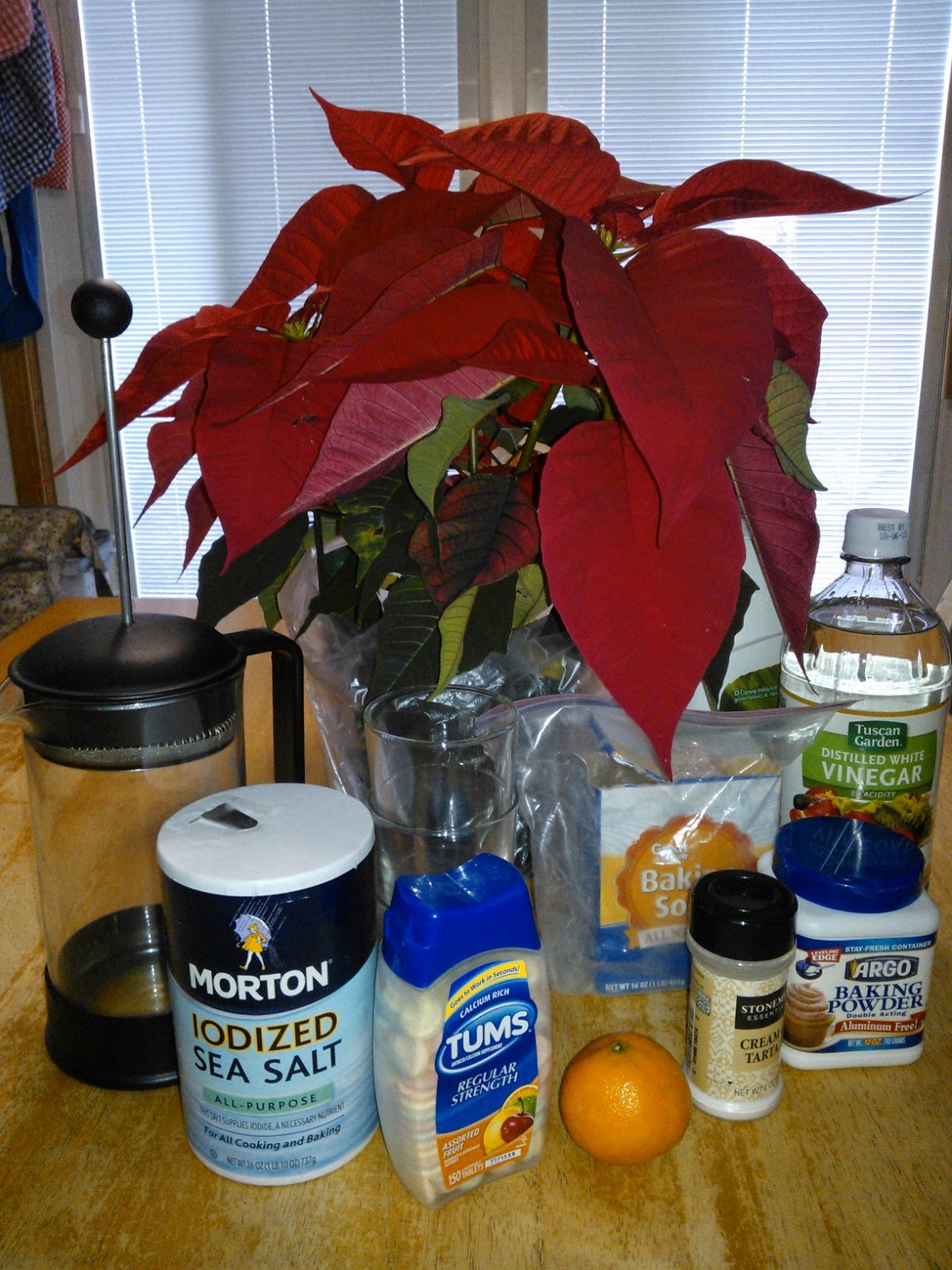So, I got this poinsettia from a raffle at Jazzercise class (Yes, Jazzercise. It's fun, and that's another post). As a science teacher I was so excited. You see, poinsettias are acid/base indicators. It is not as dramatic as red cabbage, but it still indicates, and it smells better.
Here's what I did, and you can to. Gather all the things you want to test (clear solutions are better as color affects color), a poinsettia, a French press (or something to make your 'tea' in), containers to test in (we used glasses), hot water, and eager helpers.
Have your super helpers take the red leaves off and put them in the French press. It does take a lot of leaves. It actually helps to rip the leaves or cut them up. On a side note you can use the green leaves too but the solution goes from green to clear rather than green to red. It's a fun secondary test if you have the time and the ingredients.
Remove the leaves. The longer it steeps the better. The more concentrated the 'tea' the better the color.
Set up your testing materials. Add water to powders like baking soda, salt, baking powder, and borax. We diluted all the containers so the color was not as striking but it was detectable.
Give the little information on acid and bases. Ask questions on which ones do you think are acids and which one do you think are bases. Why?
 |
| What is up with this picture? The milk has a hue. |
 |
| Remember that the orange juice affect the color. It is pink at initial mixing. |
I take fabulous pictures; I know it. You'll have to trust me on the colors. Anyway, the acid solutions are pink. The basic solutions are green, and the neutral solutions are brownish. We didn't put them in order from acidic to basic yesterday, but we have done it before. We did mix it all together to see what colors they would make. I, being the geeky teacher, did ask if the new solution was more acidic or basic. Our big bucket in the end was slightly acidic.
Give it a try if you have a chance. It's an easy experiment, fairly clean and definitely seasonal.









No comments:
Post a Comment